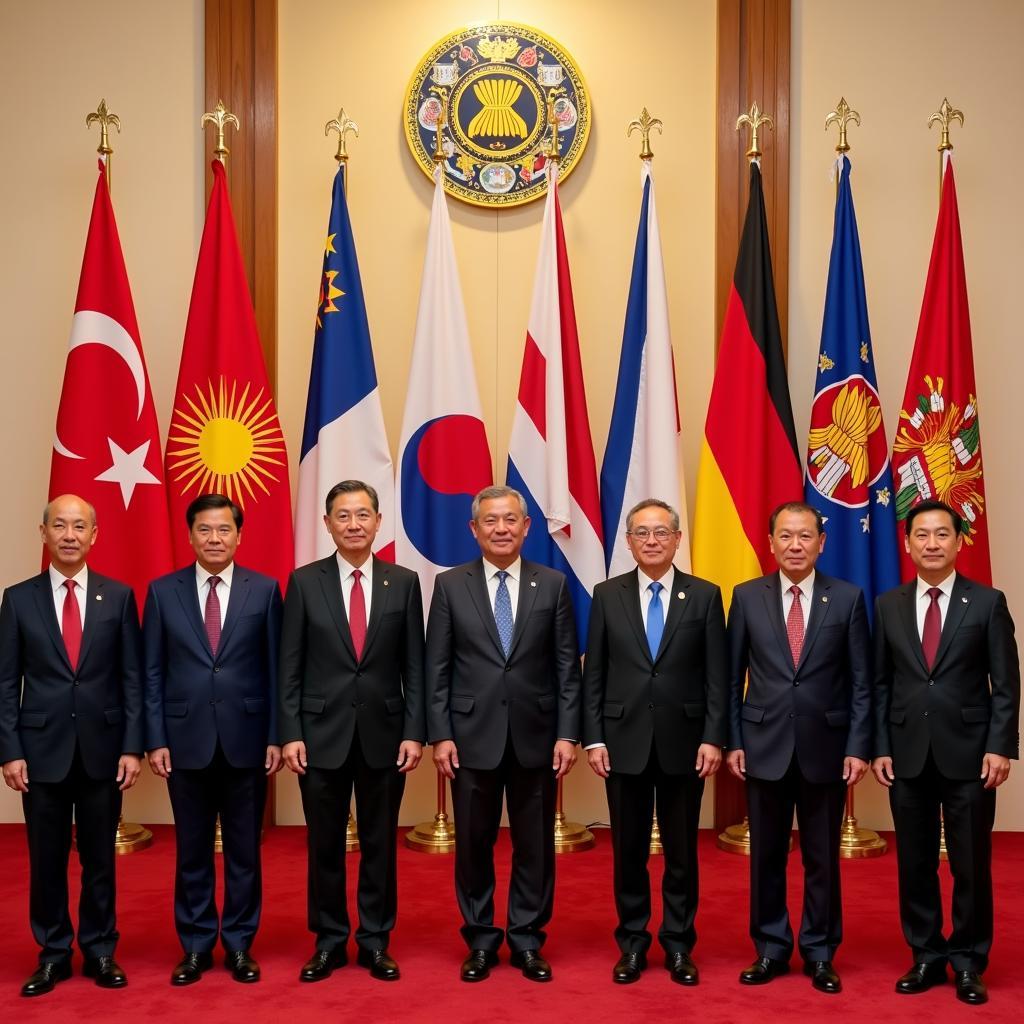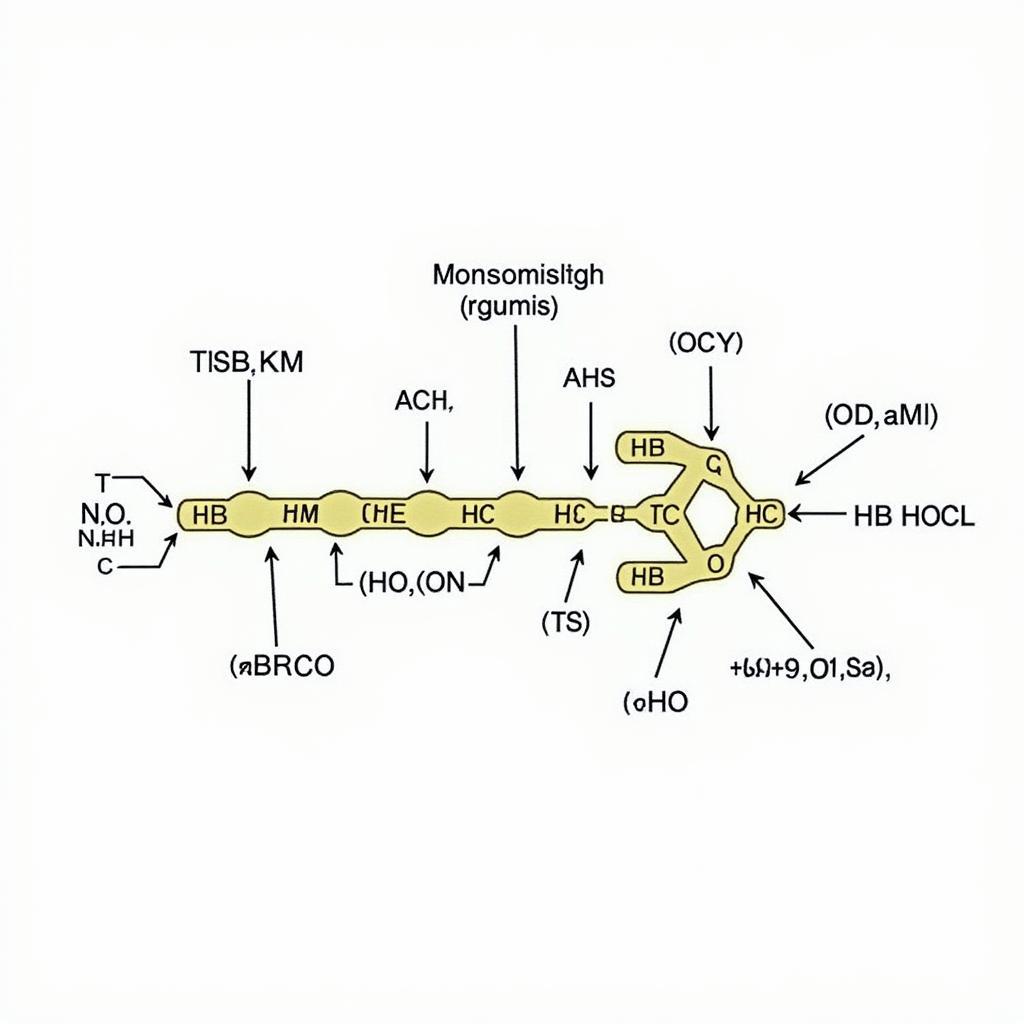The term “Ase Group Wikipedia” likely stems from someone seeking information about the Association of Southeast Asian Nations (ASEAN) on Wikipedia. As a reliable source of information, Wikipedia often serves as a starting point for understanding various topics, including regional organizations like ASEAN. This article delves deeper into ASEAN, exploring its history, purpose, and significance in the global landscape.
A History of Collaboration: The Genesis of ASEAN
ASEAN, established on August 8, 1967, represents a collective effort by Southeast Asian nations to foster peace, stability, and prosperity in the region. The association emerged in a period marked by Cold War tensions and regional conflicts. Five founding members – Indonesia, Malaysia, the Philippines, Singapore, and Thailand – signed the ASEAN Declaration (also known as the Bangkok Declaration), laying the groundwork for a new era of cooperation.
 ASEAN Founding Fathers
ASEAN Founding Fathers
The Pillars of ASEAN: A Framework for Progress
ASEAN’s core principles, enshrined in the Treaty of Amity and Cooperation (TAC) in 1976, emphasize mutual respect, non-interference, and peaceful dispute resolution. The association operates on three pillars, each focusing on a specific aspect of regional development:
- ASEAN Political-Security Community: This pillar aims to maintain peace and security in the region through dialogue, confidence-building measures, and conflict prevention mechanisms. It also addresses transnational challenges such as terrorism, piracy, and natural disasters.
- ASEAN Economic Community: Economic integration forms the crux of this pillar. ASEAN strives to create a single market and production base, enhance competitiveness, and promote equitable economic development across member states.
- ASEAN Socio-Cultural Community: This pillar focuses on human development, social progress, and cultural exchange. It aims to improve the quality of life for people in the region through initiatives in education, healthcare, environment protection, and the promotion of ASEAN identity.
Expanding Horizons: ASEAN’s Growth and Influence
Since its inception, ASEAN has expanded to include Brunei Darussalam, Vietnam, Laos, Myanmar, and Cambodia. This expansion reflects the association’s commitment to inclusivity and its growing stature in the region. ASEAN’s influence extends beyond Southeast Asia, as it actively engages with dialogue partners such as China, Japan, the United States, and the European Union.
 ASEAN Summit
ASEAN Summit
ASEAN and the World Stage: A Growing Global Player
ASEAN’s economic clout has grown significantly over the years. The region boasts a combined GDP of over US$3 trillion, making it the fifth-largest economy globally. ASEAN plays a pivotal role in shaping the regional and global trade landscape through its free trade agreements and active participation in multilateral forums like the World Trade Organization (WTO).
Challenges and Opportunities: Navigating a Complex World
ASEAN faces numerous challenges, including:
- Narrowing the Development Gap: Despite economic progress, disparities persist among member states. Bridging this gap remains crucial for achieving inclusive and sustainable development.
- Geopolitical Tensions: The South China Sea dispute and evolving power dynamics in the Asia-Pacific region present challenges to ASEAN’s unity and centrality.
- Non-Traditional Security Threats: Transnational issues such as terrorism, cybercrime, and pandemics require collaborative responses and regional cooperation.
Despite these challenges, ASEAN stands as a testament to the power of collaboration. Its continued success hinges on:
- Strengthening Regional Integration: Deeper economic integration, enhanced connectivity, and closer people-to-people ties can further bolster ASEAN’s resilience and influence.
- Promoting Dialogue and Cooperation: Open communication and constructive engagement with dialogue partners are essential for addressing shared challenges and maintaining regional stability.
- Enhancing ASEAN’s Global Role: By leveraging its economic weight and strategic location, ASEAN can play a more prominent role in shaping global governance and addressing global issues.
Conclusion: ASEAN’s Enduring Legacy
The “ase group wikipedia” search term highlights the continued interest in understanding ASEAN and its role in the world. ASEAN’s journey exemplifies the transformative potential of regional cooperation. As the association navigates a complex and ever-evolving global landscape, its commitment to dialogue, collaboration, and shared prosperity will continue to shape Southeast Asia’s future.

